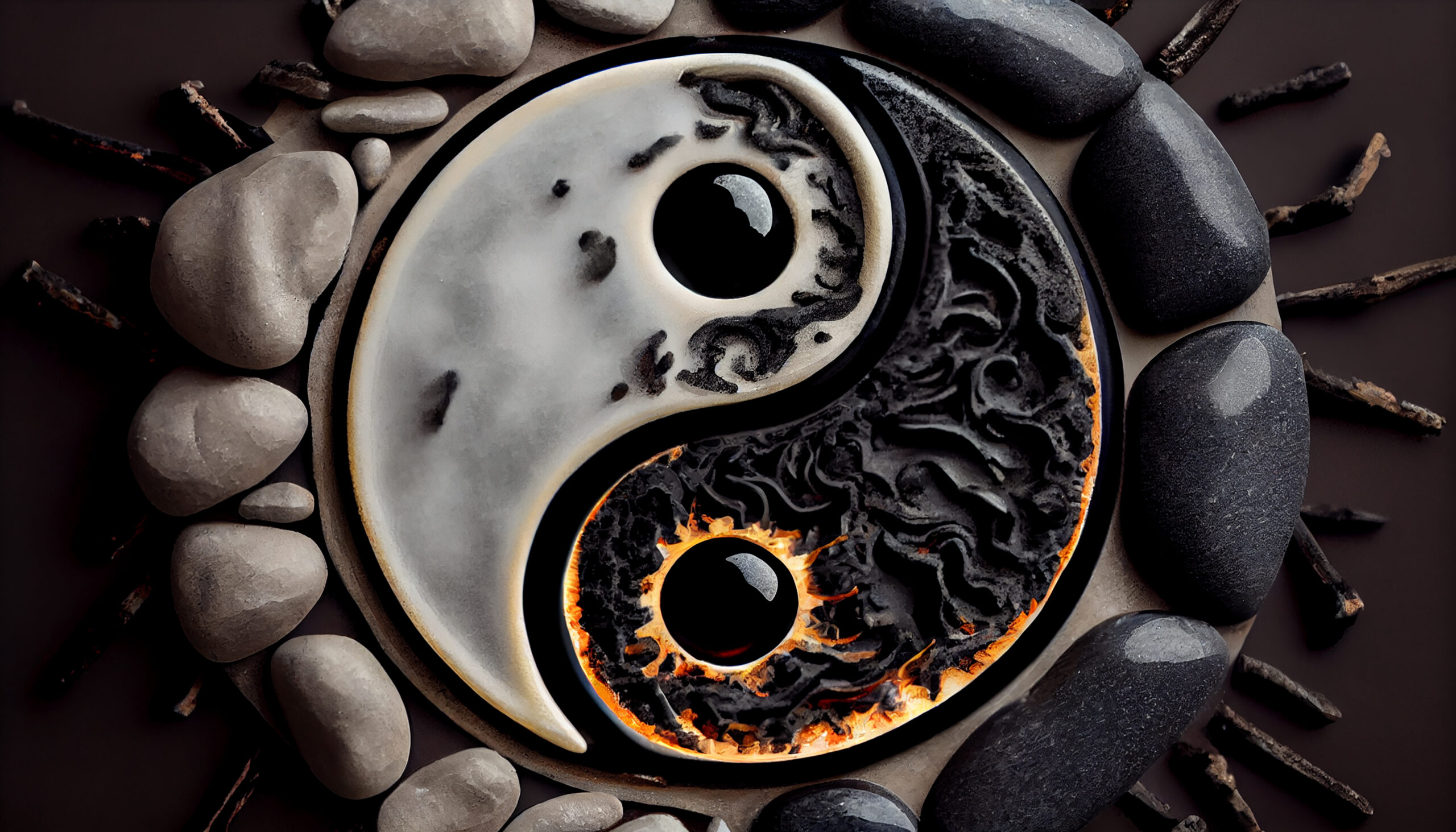Traditional Chinese Medicine (TCM) has long emphasized the importance of balance in achieving optimal health. At the heart of this system lies the concept of yin and yang—a dualistic harmony that governs everything in the universe, including the food we eat. In today’s world of fast food and processed meals, embracing yin-yang foods and health benefits can be a transformative way to restore internal balance, prevent disease, and boost overall well-being.
Understanding this ancient principle doesn’t just help in choosing what to eat—it empowers individuals to nourish their body, mind, and soul through conscious food choices. Let’s explore how yin-yang foods work, what benefits they offer, and how to integrate them into modern diets.
Understanding Yin and Yang in Traditional Chinese Medicine (TCM)
What Is Yin?
In TCM, yin represents the cooling, moistening, and calming energy of the body. It’s associated with qualities such as darkness, inwardness, rest, and stillness. Yin foods typically:
- Have a cooling effect on the body
- Include fruits, dairy, leafy greens, and tofu
- Help combat internal heat, dryness, and inflammation
When a person is experiencing symptoms like fever, dry mouth, or restlessness, increasing yin-rich foods can help restore harmony.
What Is Yang?
Yang, on the other hand, symbolizes warmth, energy, and activation. It relates to heat, brightness, movement, and outward expansion. Yang foods:
- Have warming and stimulating properties
- Include meat, eggs, ginger, garlic, and spices
- Are great for those feeling cold, fatigued, or low-energy
A person suffering from cold limbs, lethargy, or slow digestion may benefit from eating more yang-oriented foods to restore their vitality.
The Yin-Yang Food Spectrum
Foods are not strictly yin or yang—many fall along a spectrum based on their energetic properties. Here’s a quick categorization:
Yin Foods List with Benefits
| Food | Properties | Health Benefits |
| Cucumber | Cooling, hydrating | Reduces internal heat, supports hydration |
| Watermelon | Moistening, detoxifying | Aids digestion, cleanses bladder |
| Tofu | Neutral to slightly cooling | Builds body fluids, soothes inflammation |
| Spinach | Cooling and blood-enriching | Improves circulation, detoxifies liver |
| Pear | Moistens lungs, cooling | Eases cough, helps dry throat |
Yang Foods List with Benefits
| Food | Properties | Health Benefits |
| Lamb | Warm, energizing | Boosts yang energy, warms the body |
| Ginger | Hot, stimulating | Aids digestion, improves circulation |
| Garlic | Pungent, warming | Antibacterial, improves immunity |
| Chicken | Warm, nourishing | Strengthens spleen and stomach qi |
| Chili Peppers | Very hot | Increases metabolism, clears cold dampness |
How Ying Yang Foods Influence the Body
Digestive Health and Metabolism
Yin-yang balance is crucial for the digestive system. Yang foods stimulate appetite and metabolic activity, helping in cases of bloating or sluggish digestion. Conversely, yin foods soothe and hydrate, helpful during conditions of inflammation or overheating.
Hormonal and Emotional Balance
According to TCM, the liver, spleen, and kidney are vital in hormonal balance. Yin foods support calmness and hormonal regulation, especially for conditions like insomnia or hot flashes. Yang foods uplift mood and are beneficial during depressive or low-energy states.
Yin-Yang Food Pairing Principles
Ideal Meal Combinations
A balanced meal includes both yin and yang elements. For instance:
- Breakfast: Oatmeal (neutral) + banana (yin) + cinnamon (yang)
- Lunch: Brown rice (neutral) + steamed spinach (yin) + grilled chicken (yang)
- Dinner: Miso soup (yin) + stir-fried beef (yang) + broccoli (neutral)
Seasonal Eating with Yin and Yang
- Winter: Emphasize yang foods to warm the body
- Summer: Increase yin foods to cool down
- Spring/Fall: Use balanced meals with seasonal vegetables
Common Health Issues and Yin-Yang Food Remedies
TCM Diet Tips for Common Ailments
| Condition | Suggested Foods | Yin or Yang |
| Fatigue | Lamb, ginger tea | Yang |
| Insomnia | Lotus seeds, pears | Yin |
| Cold Hands & Feet | Garlic, black pepper | Yang |
| Hot Flashes | Tofu, cucumber | Yin |
| Digestive Issues | Brown rice, miso | Neutral to Yang |
Integrating Yin-Yang Foods into a Modern Diet
Embracing the wisdom of yin-yang foods doesn’t require a complete lifestyle overhaul. With thoughtful planning and gradual changes, anyone can align their meals with nature’s rhythms and support their body’s natural energy balance.
Shopping and Cooking Tips
Here are some practical ways to bring balance into your daily meals:
- Visit local farmers’ markets to find seasonal produce aligned with the time of year.
- Stock both yin and yang staples—keep items like tofu, leafy greens, garlic, eggs, and ginger on hand.
- Avoid extremes—don’t overload your meals with only hot (yang) or cold (yin) items.
- Cook mindfully—use cooking methods to adjust a food’s nature. For example, steaming cools food slightly, while roasting or stir-frying adds warmth.
- Listen to your body—if you feel sluggish, try warming soups and spices; if overheated, go for fresh salads and herbal teas.
Meal Planning Examples
| Meal | Yin-Yang Combination |
| Breakfast | Rice porridge with cinnamon (yang) and goji berries (yin) |
| Lunch | Sautéed tofu (yin) with bok choy and garlic (yang) over brown rice |
| Dinner | Steamed fish (neutral) with ginger (yang) and cucumber salad (yin) |
Balanced eating, rooted in nature and the self, is the cornerstone of traditional Chinese nutrition—and it’s more relevant than ever in our modern, often chaotic lifestyles.
FAQs About Ying Yang Foods and Health Benefits
1. Can anyone follow a yin-yang balanced diet?
Yes, the yin-yang food philosophy is adaptable to all diets and cultures. You can integrate it regardless of whether you’re vegetarian, vegan, or a meat-eater. The key is listening to your body’s signals and adjusting accordingly.
2. How do I know if I’m out of balance?
Signs of imbalance might include feeling constantly tired (yang deficiency), overheating and irritability (yin deficiency), poor digestion, mood swings, or difficulty sleeping. These symptoms can guide you toward the right food balance.
3. Is there scientific evidence supporting yin-yang food principles?
While rooted in ancient philosophy, modern research supports many ideas behind TCM. For example, cooling foods like cucumber are anti-inflammatory, and warming foods like ginger improve circulation. However, scientific validation of the yin-yang theory as a system is still ongoing.
4. Are there any risks to eating too much yin or yang food?
Yes. Too much yang food can cause heat symptoms such as mouth ulcers, acne, or irritability. Too much yin can lead to cold limbs, fatigue, or digestive sluggishness. Balance is crucial.
5. How often should I adjust my diet according to the yin-yang theory?
You should make seasonal and lifestyle-based adjustments. In winter, add more warming (yang) foods. During summer, include more cooling (yin) options. Also, adjust based on stress levels, activity, and health conditions.
6. Can children or elderly people follow yin-yang diets?
Absolutely. Children benefit from balanced nutrition that supports growth, and older adults can manage health issues like fatigue or digestion more effectively. Adjust food properties gently and consult a TCM practitioner if needed.
Conclusion: Embrace the Harmony of Ying Yang in Everyday Eating
In a world full of extremes, the concept of ying yang foods and health benefits offers a refreshing path to balance and vitality. Rooted in ancient wisdom and still remarkably relevant today, this approach doesn’t demand rigid rules. Instead, it encourages mindful eating, seasonal living, and listening to your body’s needs.
By understanding the energetic properties of food and how they interact with your unique constitution, you can use each meal as a tool for healing and harmony. Whether it’s adding ginger tea to a cold winter morning or cooling your body with watermelon on a hot day, small shifts can lead to profound changes in health and well-being.
So why not begin today? Take your first step toward harmony with nature and with yourself, through the timeless balance of yin and yang.


























































